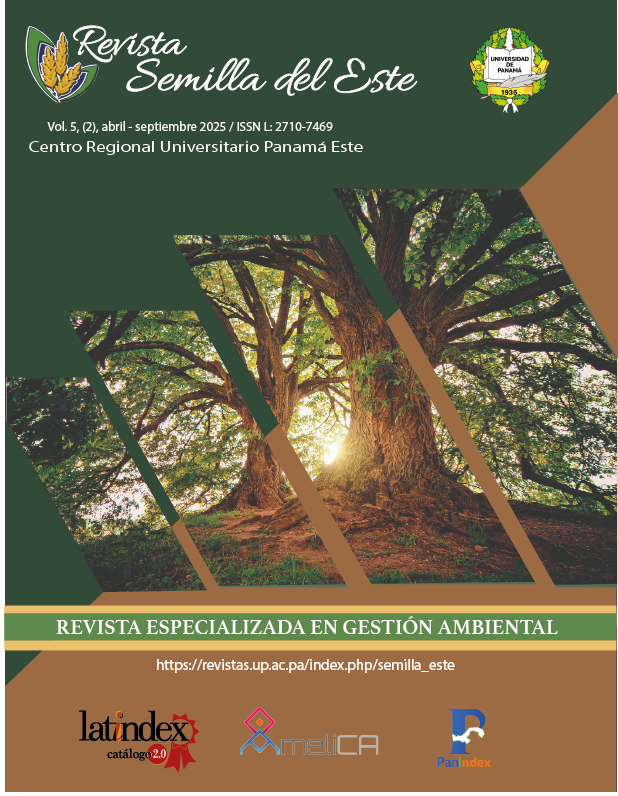

Copyright (c) 2025 Revista Semilla del Este

This work is licensed under a Creative Commons Attribution-NonCommercial-ShareAlike 4.0 International License.
This research is based on an analysis of floral species present in pollen samples collected by the species Apis mellifera in an apiary in the province of Colón, Panama. Our research seeks to determine the floral biodiversity index found in the months of February and April through the identification of pollen collected by Apis mellifera. For the study, pollen was collected using plastic pollen traps, which were implemented in 4 stable hives of the apiary. The pollen samples were stored in airtight containers, without a specific temperature, to be analyzed later in the laboratory using an optical microscope. Approximately 31 floral species distributed across 18 families were identified. The families with the highest representation were Fabaceae, with 5 species; Asteraceae, with 3 species; and Anacardiaceae, Cannabaceae, Cunoniaceae, Euphorbiaceae, Gentianaceae, Oleaceae, and Rubiaceae, each with 2 species. Although April has a higher number of species (13 compared to 10 in February), the slight decrease in the Simpson index (from 0.9524 to 0.9474) suggests that despite the increase in the number of species, the community still exhibits high homogeneity in terms of relative abundance among the species.